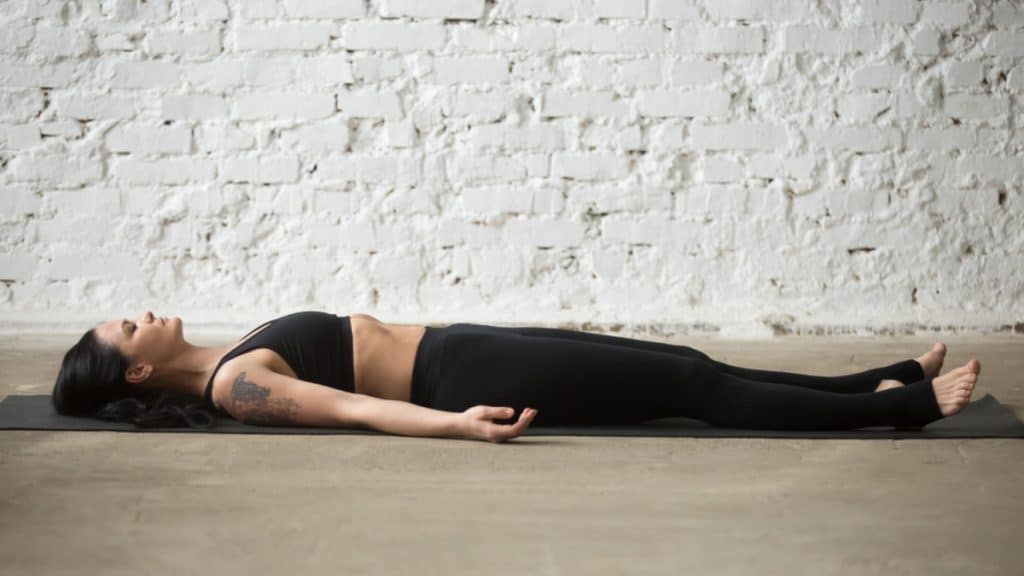Yoga nidra which is commonly known as yogic speed is a traditional yoga relaxation technique that offers several benefits. It is a practical approach that helps you address several health issues and cope with them. You can control your body’s relaxation response with this technique. The best thing is that anyone can perform it without going through any complex process.
In this article, we will learn more about yoga nidra and its benefits. Also, we will go through some important tips for beginners to practice the technique.
What Is Yoga Nidra?
Yoga nidra is a form of guided meditation that brings you into a state between waking and sleeping. In this state, your body is completely relaxed, but your mind remains conscious, leading to physical, mental, and emotional relaxation. It aims to guide the practitioners into a state of deep relaxation where they enjoy healing and self-awareness.
During a Yoga Nidra session, you lie down in a comfortable position, usually in Savasana. A guide will lead you through different stages of awareness. These stages often include body scanning, breath awareness, and visualization. Traditional meditation requires concentration, whereas yoga nidra allows you to simply relax and follow the guidance. This advantage makes the technique accessible to all people regardless of their skill level.
5 Things You Should Know About Yoga Nidra
Physical Benefits
Yoga Nidra offers a wide range of physical benefits. It helps to activate the parasympathetic nervous system which further decreases the cortisol level in your body. This lowers your overall blood pressure, reduces muscle tension, and improves the health of your heart.
On top of this, it improves the quality of sleep. Many people who struggle with insomnia or restlessness can use the technique to fall asleep quickly and enjoy a deeper and more restorative sleep. The relaxation experienced during the practice allows the body to enter a state of healing.
Mental And Emotional Benefits
You can enjoy several mental and emotional benefits with yoga nidra. It guides your mind into a state of conscious rest that further helps in reducing depression, chronic stress, and anxiety. It promotes deep relaxation, creativity, and emotional processing.
So, it can help all people to release their suppressed emotions and break the negative thought pattern. It creates a sense of inner peace and emotional clarity. Over time, you will be able to enjoy improved mental health and a balanced emotional state.
Guided Yoga Nidra Sessions Are Better
You can practice the technique on your own, but the guided session will help you enjoy and reap better benefits. In the guided session, a teacher will take you through different stages of the technique and help you stay focused. You can stay away from the distraction and experience the full benefits of the practice.
The best thing is that you can move through the practice in the correct sequence with the guided sessions. You will start with body awareness and slowly move towards deeper relaxation and visualization.
Common Misconceptions About Yoga Nidra
There are several misconceptions related to yoga nidra. One of the most common misconceptions is that the yoga nidra practice is just a form of sleep. However, the goal of the practice is to remain consciously aware while entering deep relaxation. It is more like mindful rest than a simple nap.
Some people think that the practice requires advanced skills and a deep understanding of yoga. In reality, anyone, regardless of skill level, can practice it and enjoy its benefits.
How To Get Started With Yoga Nidra?
Here are some simple steps with which you can start your yoga nidra practice.
Step 1: Find a peaceful place where you can stay away from distractions and lie comfortably for 30 to 40 minutes. Make sure the room is warm and there are no bright lights to promote better relaxation.
Step 2: As a beginner, you must opt for a guided session to kickstart your journey. Pick a suitable app or recorded online session to practice it in the correct sequence.
Step 3: Begin the practice by lying on your back in the Savasana pose. You can use a blanket or pillow to increase the overall comfort level. Make sure to keep your eyes closed.
Step 4: Follow the guidance of your chosen session properly. It will start with a body scan, then move into breath awareness, and end with visualization.
Step 5: Practice it regularly to reap proper benefits from yoga nidra and try to include it in your daily routine.
